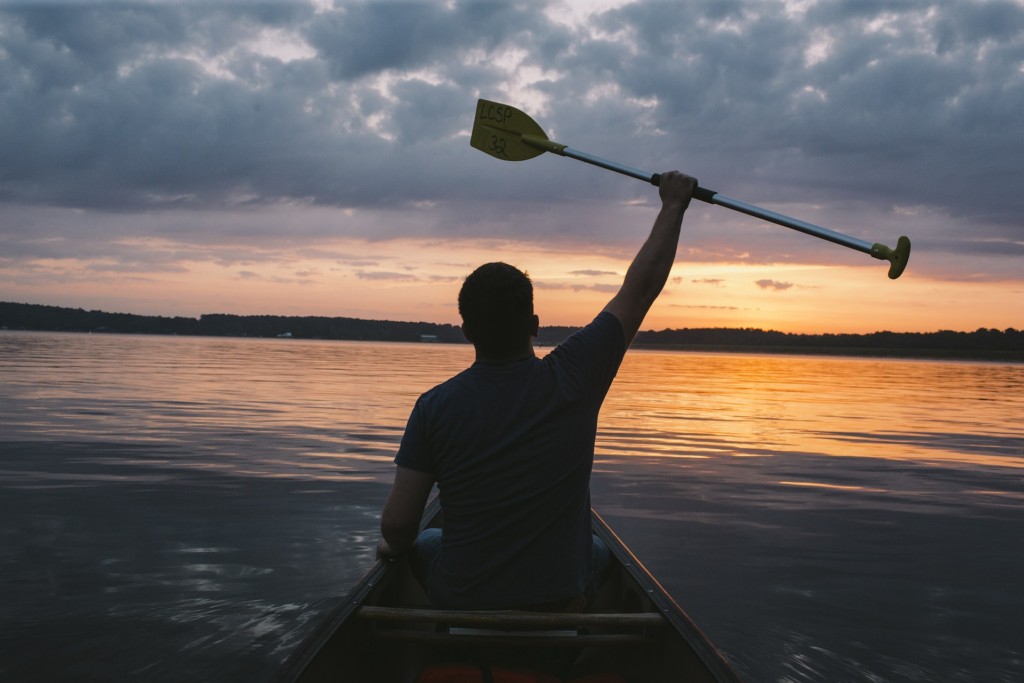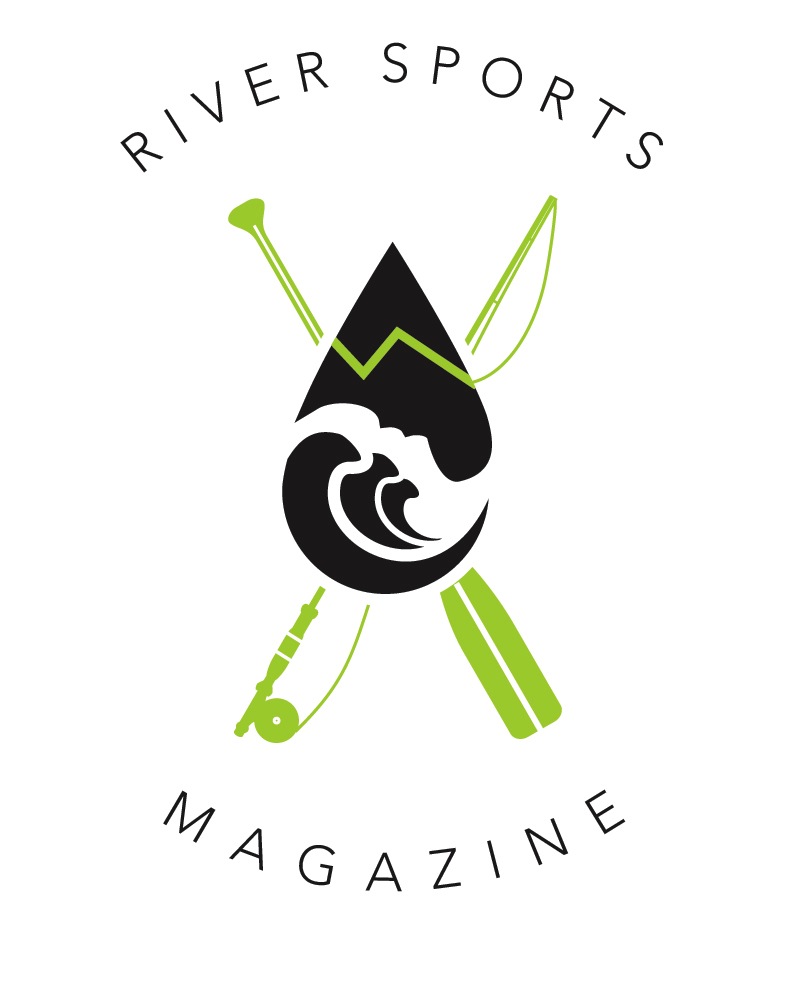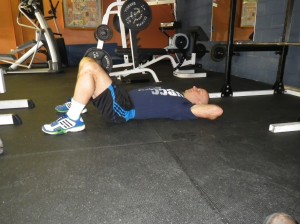The same thing happens to me every spring. The ice leaves the river, and I get so excited that I’m out paddling hard for the whole day. And then I pay for it with sore muscles for a week. Even though I keep myself fit through the winter, just using my muscles differently makes me reach for the rub A535. Trainers call this specificity of training, which simply means that you need to train for your sport.
So this year I am going to do things a little differently. I am going to follow a training program designed by Barry Short, a certified personal trainer, and one of my paddling buddies. This program is geared toward recreational paddlers to give you the shoulder and core strength to not only avoid early-season pain but also to have the strength to dig in when the wind comes up. Additionally, the program will help prevent overuse injuries that are common in sports with repetitive movements.

Get ready for the paddling season! Photo: Image by jordan3600 from Pixabay
Some of the links in this article may contain affiliate links. If you make a purchase using these links, we receive a small commission at no extra cost to you. Please see our disclosure for more details.
What You Need To Get Started
To complete these exercises, you don’t need a gym membership or fancy equipment. If you complete these paddler exercises at home, you’ll need:
- a medicine ball or a heavy book, backpack, basketball as a home alternative (weight depends on current strength level)
- a couple of sets of dumbbells or cans of soup, bottles of shampoo (weight depends on current strength level)
- resistance band or belt, suspenders, robe tie as a home alternative
- a yoga mat or towel
Program Progression
In the beginning, do the workout (listed below) twice a week. After two or three weeks, add a third weekly workout. However, don’t exercise on consecutive days; your muscles need time to repair.
For each exercise, do three sets of 15 repetitions each. If you are completing the fifteenth repetition in your third set effortlessly, then you need to increase the size of the medicine ball or weights you are using. Doing a relatively high number of repetitions for each exercise will help to build endurance, which is more critical to paddlers than brute strength.
Just remember, if you are new to exercising, visit your doctor first to make sure there are no underlying reasons why you shouldn’t exercise.
Exercises For Paddlers
All exercise sessions should begin with a short warmup. Walk, cycle, skip, do jumping jacks, or any other easy movement until you just start to sweat. You can also complete pre-workout stretches if you prefer.
1. Torso Rotations
The first exercise for paddlers is torso rotations with a medicine ball. With your feet about shoulder-width apart, hold the medicine ball at belly button height. Then, rotate your upper body to the left and right, keeping your hips pointed to the front. Complete 15 rotations on each side.
2. Woodchopper
The next exercise is called the Woodchopper. It works your shoulders and obliques (side abdominal muscles) while simulating a similar body rotation as a paddling stroke.
Again, your feet are shoulder-width apart. Make sure to keep your left foot a pace in front of your right. Also, have a relaxed bend in your knees. Start with the medicine ball over your right shoulder while looking over your right shoulder. Lower yourself into a lunge while swinging the ball to the outside of your left foot. Then return to your starting position with the ball over your right shoulder. This movement is one repetition. Do 15 on each side.
3. Bent Over Rows
The next exercise for paddlers is Bent Over Rows, which uses the dumbbells to strengthen the back, an area most of us ignore.
Start with your feet shoulder-width apart. Hinge at your waist, pushing your hips back until your torso is almost parallel with the floor. Let the dumbbells hang down from the shoulders. Row up with your elbows toward the ceiling, while squeezing your shoulder blades together. Then let the weights lower in a controlled manner. This movement is one repetition of the fifteen recommended.
4. Bicep Curls
Bicep curls target the front of the arm, namely your bicep muscle.
Hold a dumbbell in each hand and slowly curl the weights up and down, bending at the elbows. Proper form is critical. Don’t rock your body and use a full range of motion.
5. Tricep Extensions
The next exercise for paddlers targets the triceps on the back of the arms.
For this exercise, sit on a bench and hold the dumbbell over your head with both hands. Keeping your elbows pointing straight ahead and close to your ears, lower the dumbbell behind your head and back up to the starting position. This movement is one repetition of the 15 recommended.
6. Deadlifts
Deadlifts work the muscles in the back of the legs, which will help keep us from getting sore and tired from sitting too long on uncomfortable canoe and kayak seats.
Start with your feet shoulder-width apart and a relaxed bend in the knees. Holding a dumbbell in each hand, hinge at the waist, keeping your back long without either bending at the waist or hyperextending your back. Then straighten to return to the starting position. This movement is one repetition of the 15 recommended.
7. Lat Pull-Downs
Paddlers obviously need strong shoulders and backs. One of the best exercises to strengthen these areas is straight arm lat pull-downs.
For this exercise, you need to hook your resistance band so that one end is higher than your shoulders. You might need to be a little creative here. You could put a hook on the wall or maybe put a knot in it and sling it over a door. There are door anchors on the market that go over doors to which you attach the band.
To do the lat pull-down, grab the band at shoulder height and while keeping your elbows locked. Then, pull the band down until your hands touch your thighs. Keep your torso straight throughout this exercise. You can vary the resistance of the band by kneeling to get a harder workout or merely changing the length of the band.
8. Ab Crunch
A crunch works your abdomen since the source of all of our strength ultimately comes from the core.
For the crunch, lie on your back on a mat with your feet flat on the ground. Keep your knees at about a 90-degree angle. Put your hands at your ears and your elbows pointing out to the sides, not pointing forward. Keeping your chin off your chest, roll your head and shoulders up. You should feel your abdominal muscles engage. And roll back down for one repetition. Build up to where you can do at least 30 consecutive crunches.
9. Plank
The plank also works your abs.
To do this exercise, start on the mat on your stomach with your feet about a foot apart. Put your elbows directly under your shoulders. Then, push up and back, so you are hovering on your elbows and toes. Your body must be flat. Resist the temptation to let your butt stick up or sag. Start with 15 seconds and work your way up to 45 seconds or longer. Try doing this three times with a short break between each plank.
Final Tips
Exercise is not meant to be a form of torture. However, it’s also true that you won’t get stronger without feeling uncomfortable. If you haven’t exercised in a while, start slow by doing half the exercises on one day and the other half on another. Remember to not exercise on consecutive days.
And if you follow this plan, you should be in midseason shape right from the first paddle stroke of spring.
What exercise do you do as a paddler? Share your recommendations or questions in the comments below!
Read Next:
Paddlers, It’s Time To Stretch
Building & Maintaining Endurance For Your Sports
Exercises For Stand-Up Paddleboarders To Build Strength & Flexibility
Updated April 28, 2020, to include formatting changes, additional links, and photos
















Missing *Bird dog to balance your ab work protect the low back
*Deadlift changed to Romanian deadlift to work back and hamstrings
*Cubans to work upper back, shoulders, biceps, triceps
* Squats balance legs with RD you need the strength below to balance and stabilize the top with rotation
This all applies for beginners or advanced canoeists !
Thank you for sharing these other exercises with us, Johnny! These are all a great addition to the exercises included above to prepare for the paddling season ahead. 🙂 -Susan, RiverSports Mag Editor